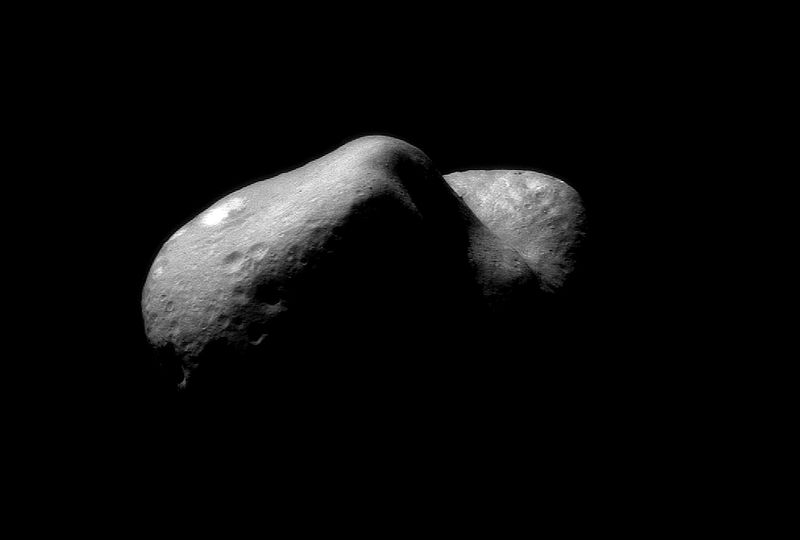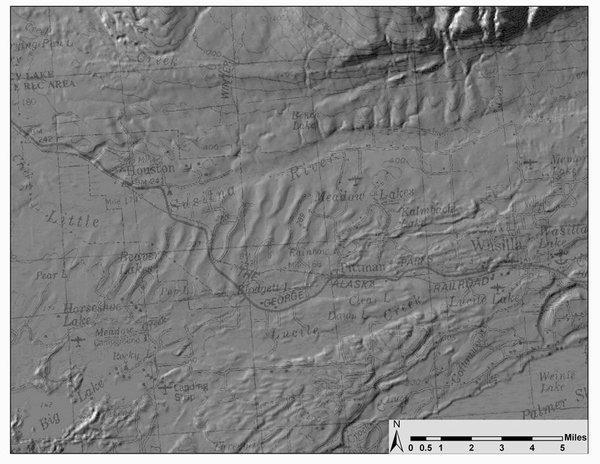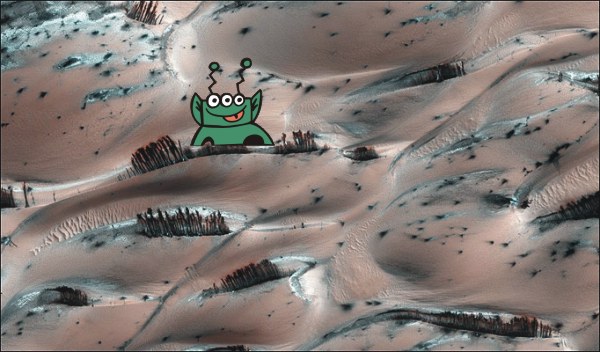by Ian Juby | May 4, 2010 | CrEvo News Bites
Ten times in the first chapter of Genesis, it is stated that God created everything to reproduce after its kind. So in other words, according to creation, we should see things staying the same over time and faithfully reproducing after their kind. Of course, evolution has organisms changing over time – and changing lots.
When one looks in the fossil record, what we see is stasis and extinction – both of which fit well within the creation paradigm, but run opposite the predictions that evolutionary theory would make.
So even playing by the evolutionary rules, the evidence does not stack up for evolution. A recent study (using evolutionary assumptions and rules) is now saying the same thing from genetics:
http://www.sciencedaily.com/releases/2010/04/100429172956.htm
In the words of Science Daily,
“A genetic study of island lizards shows that even those that have been geographically isolated
for many millions of years have not evolved into separate species as predicted by conventional evolutionary theory.”
The lizards in the study, even given evolutionary assumptions of millions of years, still interbreed with each other and have not been isolated into different “species.” This is just one more piece of evidence that evolution is simply not true, but does match the Biblical account of creation.
by Ian Juby | Apr 29, 2010 | CrEvo News Bites
From Fox News:
http://www.foxnews.com/scitech/2010/04/28/flying-dinosaur-reptile-pterosaur-texas/
A new, Ptoothy Pterodactyl which was unearthed in Ptexas in 2006, is now being reported. Of course, such discoveries are always assigned an evolutionary age of millions and millions of years. Question: How do they know how old it is? Answer: They don’t – it’s assumed. You can’t date sedimentary rocks using radiometric dating methods, but usually there’s biomatter in dinosaur bones – which does mean it can be carbon dated.
Herein lies the problem: C14 (Carbon 14) dating methods always return ages of between 5,000 years old and 50,000 years old, no matter the alleged “age” of the fossil bone, oil, coal, natural gas, CO2 from gas wells, etc… All of these examples are supposed to be many millions of years old, which means they should have ZERO C14 in them. The fact that they have plenty tells you right off the bat they are not millions of years old, they are only a few thousand years old.
Further to this, did you ever notice that the fossil record only shows two things: Extinction, and stasis. I don’t think I need to explain extinction, but I will point out that this does not help evolution one bit – extinction is a loss of variety, a loss of a species, not a gain as evolution needs.
Stasis is an organism remaining the same over alleged millions of years. The Coelacanth is a classic example. The Bible says (ten times in the first chapter of Genesis) that God created everything to reproduce after its kind. Evolution has organisms changing over time. Stasis is what we find in the fossil record, not change – and I give a few examples of this in part 10 of “The Complete Creation” video series, available for viewing for free on the complete creation website:
http://completecreation.org/
by Ian Juby | Apr 29, 2010 | CrEvo News Bites

(Photo by NASA)
Splashed across the headlines of the past two days are the “discoveries” of ice and organic materials on an asteroid.
http://www.sciencedaily.com/releases/2010/04/100428142302.htm
Actually, this is old news – spectrascopic analysis of comet tails had already shown gases like methane, presumed to be from decaying biomatter in the comet. Asteroids have been known for a while now to have considerable water content – so really this is nothing new. Further to this, meteorites have been found containing water, salt, and at least two meteorites have been found with living bacteria contained within them.
(http://www.creationscience.com/onlinebook/Asteroids2.html see heading “Meteorites return home” near the bottom of the page)
Of course the evolutionary theorists like to point to this, speculating that perhaps Earth was “seeded” from space with life, which then evolved. This does not answer the un-answerable problem of the origin of the first life – it is simply an attempt to put the problem as far away as possible, and as long ago as possible. (Now picture the Star Wars opening screen, text scrolling off into the distance, “In a galaxy far, far, far, far, far, away, many, many, many, many billions of years ago, the impossible became probable, and the probable became inevitable because of the extreme distance and time…”)
So far as we know, the laws of physics and nature still apply in the far reaches of the solar system. Therefore, well-established scientific and natural laws apply there – laws like the law of biogenesis which states that life only arises from life, and there has never been an observed exception to this rule, hence the reason it is a law.
An explanation that is far, far, far more plausible is that the water, salt, and bacteria (and possible decaying biomatter) in the asteroids, comets and meteorites came from Earth. For one theory as to how this could happen, do take the time to read the hydroplate theory put together by Dr. Walter T. Brown, and in particular, pay attention to this “Origin of Asteroids and Meteoroids” chapter:
http://www.creationscience.com/onlinebook/Asteroids2.html
by Ian Juby | Apr 29, 2010 | CrEvo News Bites

(Giant wave ripples in Alaska, photo courtesy of Michael Wiedmer, as shown in Quaternary Research)
From Science News:
http://www.sciencedaily.com/releases/2010/04/100428142338.htm
Oh look – giant wave ripples in Alaska! From a “megaflood.” Now notice that whenever chatter is made of megafloods, it is always in reference to an ice-age lake breaching its dam. Well, 100 foot high wave ripples, spaced a half-mile apart is a pretty big lake. Reading the article, you’ll notice the researchers are not afraid to use catastrophic terms – as long as it does not refer to a global flood.
Such giant wave ripple features are not at all uncommon either. This is what led to the discovery of the Missoula flood (not much doubt that one was an ice-age lake), and you can see giant wave ripples all over Alberta, Manitoba, and at several locations here in Ontario.
While I don’t doubt that some of these are from ice-age lakes, I would suggest that at least some of these giant wave ripples are actually from the receding flood waters of the global flood. But, because evolutionary thinking does not allow for there to have been a global flood, this possibility is not even considered – in spite of the evidence, not because of it.
I should be clear too: Evolution will not permit consideration of a global flood. Science is perfectly open to it – there is a difference between the two. Science pursues the facts, Evolution does not even permit possibilities – the opposite of science.
Here are some KMZ links for Google Earth/Worldwind to view the giant wave ripples in Alaska and Manitoba:
Alaska: https://ianjuby.org/newsletters/giant_alaska_dunes.kmz
Manitoba: https://ianjuby.org/newsletters/manitoba_wave_ripples.kmz
The wave ripples in Manitoba are about 1 kilometer, crest-to-crest, and up to 15 meters high. I know this because I went and personally studied them after seeing them from a jetliner.
by Ian Juby | Apr 28, 2010 | CrEvo News Bites

Straight from the Sun:
http://www.thesun.co.uk/sol/homepage/news/2951855/Nasa-Evidence-of-life-on-mars.html
(By the way, if you read the article, you’ll need your British/Canadian dictionary handy – a “boffin” is a scientist/researcher)
NASA has said they now have evidence of life on Mars. BUT – don’t get too excited just yet, they didn’t find life, they only found gypsum, which may indicate that there may have been “pond scum,” which the Sun article claims is “the building blocks of life as we know it.”
Actually, even pond scum is incredibly complex.
As a news bite, I’m not gonna say much:
1) They didn’t find life, they didn’t find pond scum – they found minerals which they think may have been laid down by pond scum. (or perhaps it formed by other natural processes)
2) Even if there is “pond scum” on Mars, then one must ask if the pond scum evolved there, or was Mars contaminated by Earth? We do have pond scum here – and the possibility that the pond scum somehow got from earth to Mars is far, far, far better then pond scum evolving from non-living materials on Mars.
I deal with the subject of life on other planets in my soon-to-be-released video “Aliens and the evolution connection.”






